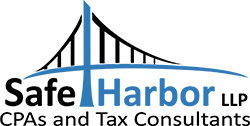The Treasury Department and the IRS have proposed regulations that identify occupations that customarily and regularly receive tips, and define “qualified tips” that eligible tip recipients may claim for the “no tax on tips” deduction under Code Sec. 224. This deduction was enacted as part of the the One Big Beautiful Bill Act (OBBBA) (P.L. 119-21).
Background
Under Code Sec. 224, an eligible individual can claim an income tax deduction for qualified tips received in tax years 2025 through 2028. The deduction is limited to $25,000 per tax year, and starts to phase out when modified adjusted gross income is above $150,000 ($300,000 for joint filers).
An employer must report qualified tips on an employee‘s Form W-2, or the employee must report the tips on Form 4137. A service recipient must report qualified tips on an information return furnished to a nonemployee payee (Form 1099-NEC, Form 1099-MISC, Form 1099-K).
If an individual tip recipient is “married” (under Code Sec. 7703), the deduction applies only if the individual and his or her spouse file a joint return. The deduction is not allowed unless the taxpayer includes his or her social security number (SSN) on their income tax return for the tax year. For this purpose, a SSN is valid only if it is issued to a U.S. citizen or a person authorized to work in the United States, and before the due date of the taxpayer’s return.
What is a Qualified Tip?
A “qualified tip” is a cash tip received in an occupation that customarily and regularly received tips on or before December 31, 2024. An amount is not a qualified tip unless (1) the amount received is paid voluntarily without any consequence for nonpayment, is not the subject of negotiation, and is determined by the payor; (2) the trade or business in which the individual receives the amount is not a specified service trade or business under Code Sec. 199A(d)(2); and (3) other requirements established in regulations or other guidance are satisfied.
The proposed regulations define qualified tips—and payments that are not qualified tips— based on several factors, including the following:
-
Qualified tips must be paid in cash or an equivalent medium, such as check, credit card, debit card, gift card, tangible or intangible tokens that are readily exchangeable for a fixed amount in cash, or another form of electronic settlement or mobile payment application that is denominated in cash.
-
Qualified tips do not include items paid in any medium other than cash, such as event tickets, meals, services, or other assets that are not exchangeable for a fixed amount in cash (such as most digital assets).
-
Qualified tips must be received from customers. For employees, qualified tips can be received through a mandatory or voluntary tip-sharing arrangement, such as a tip pool.
-
Qualified tips must be paid voluntarily by the customer, and not be subject to negotiation.
-
Qualified tips do not include some service charges. For example, if a restaurant imposes an automatic 18-percent service charge for large parties and distributes that amount to waiters, bussers and kitchen staff, the amounts distributed are not qualified tips if the charge is added with no option for the customer to disregard or modify it.
-
Qualified tips do not include amounts received for an illegal activity (a service the performance of which is a felony or misdemeanor under applicable law), prostitution services, or pornographic activity.
-
Qualified tips do not include tips received by an employee or other service provider who has an ownership interest in or is employed by the tip payor.
The proposed regulations also include examples that illustrate some of the requirements and restrictions.
Occupations that Customarily and Regularly Receive Tips
The proposed regulations list the occupations that customarily and regularly received tips on or before December 31, 2024. For each occupation, the list provides a numeric Treasury Tipped Occupation Code (TTOC), an occupation title, a description of the types of services performed in the occupation, illustrative examples of specific occupations, and the related Standard Occupation Classification (SOC) system code(s) published by the Office of Management and Budget (OMB).
The list groups the eligible occupations into eight categories:
-
Beverage and Food Service—includes bartenders; wait staff; food servers outside of a restaurant; dining room and cafeteria attendants and bartender helpers; chefs and cooks; food preparation workers; fast food and counter workers; dishwashers; host staff, restaurant, lounge, and coffee shop; bakers
-
Entertainment and Events—includes gambling dealers; gambling change persons and booth cashiers; gambling cage workers; gambling and sports book writers and runners; dancers; musicians and singers; disc jockeys (but not radio disc jockeys); entertainers and performers; digital content creators; ushers, lobby attendants, and ticket takers; locker room, coatroom, and dressing room attendants
-
Hospitality and Guest Services—includes baggage porters and bellhops; concierges; hotel, motel, and resort desk clerks; maids and housekeeping cleaners
-
Home Services—includes home maintenance and repair workers; home landscaping and groundskeeping workers; home electricians; home plumbers; home heating and air conditioning mechanics and installers; home appliance installers and repairers; home cleaning service workers; locksmiths; roadside assistance workers
-
Personal Services—includes personal care and service workers; private event planners; private event and portrait photographers; private event videographers; event officiants; pet caretakers; tutors; nannies and babysitters
-
Personal Appearance and Wellness—includes skincare specialists; massage therapists; barbers, hairdressers , hairstylists, and cosmetologists; shampooers; manicurists and pedicurists; eyebrow threading and waxing technicians; makeup artists; exercise trainers and group fitness instructors; tattoo artists and piercers; tailors; shoe and leather workers and repairers
-
Recreation and Instruction—includes golf caddies; self-enrichment teachers; recreational and tour pilots; tour guides; travel guides; sports and recreation instructors
-
Transportation and Delivery—includes parking and valet attendants; taxi and rideshare drivers and chauffeurs; shuttle drivers; goods delivery people; personal vehicle and equipment cleaners; private and charter bus drivers; water taxi operators and charter boat workers; rickshaw, pedicab, and carriage drivers; home movers
Applicability Dates
The proposed regulations apply for tax years beginning after December 31, 2024. Taxpayers may rely on the proposed regulations for those tax years, and on or before the date the final regulations are published in the Federal Register, but only if the proposed regulations are followed in their entirety and in a consistent manner.
Request for Comments, Public Hearing
Written or electronic comments must be received by October 22, 2025 (30 days after the proposed regulations are published in the Federal Register). Comments may be submitted electronically via the Federal eRulemaking Portal (https://www.regulations.gov), or on paper submitted to: CC:PA:01:PR (REG-110032-25), Room 5203, Internal Revenue Service, P.O. Box 7604, Ben Franklin Station, Washington, DC 20044.
A public hearing is being held on October 23, 2025, at 10:00 a.m. Eastern Time (ET). Requests to speak and outlines of topics to be discussed at the public hearing must be received by October 22, 2025; if no outlines are received by that date, the public hearing will be cancelled. Requests to attend the public hearing must be received by 5:00 p.m. ET on October 21, 2023.
Proposed Regulations, NPRM REG-110032-25

